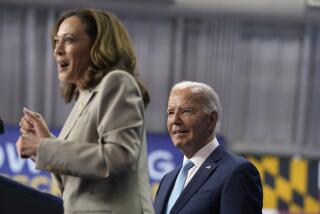Is the FDA A-OK or MIA?
Today’s question: Does the Food and Drug Administration have too much regulatory power or not enough? Paul Roberts and Jacob Grier debate the new food economy. Yesterday, they discussed food panics. Later this week, they’ll cover food shortages and other topics.
Milton, thou shouldst be living at this hour
Point: Jacob Grier
“I blame Milton Friedman,” Paul Krugman wrote in a column about America’s food safety problems last year, perversely blaming the late free-market economist for the failures of government regulation. Friedman had argued against the Food and Drug Administration’s existence. He noted that because the FDA faces public outcry when it approves dangerous products but receives little criticism for taking too long to approve safe ones, the agency is biased toward dragging its feet; market forces and the threat of lawsuits, he thought, were better guarantees of safety. Although his argument applied more directly to medicine than to food, he doubted the agency’s effectiveness on both fronts.
So who is at fault for our current food safety troubles? Don’t blame Milton! The primary reason we are disappointed with the FDA is because we place impossible expectations upon it, not because it lacks authority. As I wrote yesterday, a new Government Accountability Office report estimates the cost of inspecting every domestic and foreign food processing firm just once a year at more than $3 billion. By comparison, the agency was budgeted just $620 million for food safety in fiscal year 2008 (up $56 million from 2007). And although the agency attempts to inspect food at the borders, only a tiny percentage of shipments can receive attention.
The GAO recommends that the FDA take a smarter, risk-based approach to deploying resources, and it criticizes the agency’s failure to adapt to a changing market. Meanwhile, the market is already working to clean up its act. Feeling pressure from consumers to sell safer products, retailers are pushing to improve conditions along the chain of production. It’s certainly worth trying to upgrade the FDA, but there are limits to what it can accomplish and it may end up trailing the industry’s self-regulation.
While we evaluate the government’s regulation of the food supply, we should also examine the U.S. Department of Agriculture. The agency’s dual mandates to protect agricultural interests and to promote healthy food are often in conflict. It hands out billions of dollars in farm subsidies every year, mostly to the growers of just five crops. And it has notoriously blocked beef producers from self-testing for mad cow disease, preventing companies from responding to consumer demand for greater assurances of their food’s safety. The USDA deserves at least as much scrutiny as the FDA.
Though it takes us off the topic of food, I can’t leave a discussion about the extent of the FDA’s powers without mentioning two contentious issues. The first is the agency’s drug-testing regime, which denies desperately ill patients access to experimental drugs.
The second is Congress’ attempt to give the FDA control over tobacco, which could lead to the agency banning the development of safer cigarettes. These and other, minor cases involving the availability of certain foods take the FDA beyond its core mission of protecting consumers from adulterated products to interfering in the decisions of consenting adults. In these situations, the agency’s regulatory powers are excessive and should not be expanded.
Jacob Grier is a bartender and think tank PR manager. He writes about food and regulation at www.jacobgrier.com.
Food needs to cost more
Counterpoint: Paul Roberts
Jacob,
The real question here isn’t whether there should be more or less regulation, but whether the commercial food system has moved beyond our capacity to regulate at all. The sheer scale of the modern food economy -- the hundreds of thousands of producers, distributors and retailers, not to mention the billions of “end users” (you and me) -- and the speed at which the system operates all but defy our capacity to see it all, much less regulate its quality or safety. In the modern poultry plant, chickens move so rapidly down the assembly line that inspectors have less than two seconds to inspect each bird, and many food products move even faster. Factor in the increasing fraction of our food supply that comes from foreign producers, which are even harder to regulate, and you begin to see the enormity of the challenge. Of the 300 million tons of food imported into United States each year -- roughly a seventh of our food supply -- government inspectors are able to examine less than 2%.
In a word, the regulatory system is simply outgunned. The modern food economy generates nearly a trillion dollars a year in sales in the United States alone. The idea that problems in that economy can be addressed by the FDA’s $275-million proposal is ludicrous.
I agree that the market is the only force with sufficient power and complexity to fix this problem -- but not as the food market is currently configured. First, the relentless focus on cost reduction -- so critical in the development of the food system (and in our survival) has reached the point of diminishing returns. Margins at most food companies are so narrow (the modern chicken processor makes less than a dime in profit on each bird) that no matter what new safety technologies we come up with, the industry simply has less and less money to spend on them. Thus, it must be bitter indeed for suppliers to be told by discount retailers such as Wal-Mart to improve safety standards when those same retailers have spent the last two decades forcing suppliers to slash prices.
Second, we can no longer count on competition to automatically weed out the bad actors and unsafe suppliers. Many American food companies chose to source their raw ingredients, such as wheat gluten and soy protein, from suppliers in China because those suppliers offered the best price. And yet, the reason Chinese prices were so low isn’t simply that Chinese factories are so much more efficient and competitive, or even that Chinese wages are so low, but that China’s food industry hasn’t spent the estimated $100 billion needed to bring its food system up to Western safety standards.
As I argued yesterday, it should be clear that the necessary change here isn’t simply our regulatory philosophy or even the FDA’s budget, but the deeper structure of a food system that has become too focused on cost reduction at the expense of safety and other critical qualities.
Yes, that means we’ll probably have to spend more on food -- admittedly, not the most appealing idea when food prices are already high -- and certainly not something a politician wants to mention in an election year. But sooner or later, it’s an idea that we’re all going to have to get our heads around.
Paul Roberts writes about the economics and politics of food, energy and other key “inputs.” His most recent book, “The End of Food,” has just been published by Houghton Mifflin.
<< Previous day’s Dust-Up | Main Page | Next day’s Dust-Up >>
Day 1 | Day 2 | Day 3 | Day 4 | Day 5
More to Read
A cure for the common opinion
Get thought-provoking perspectives with our weekly newsletter.
You may occasionally receive promotional content from the Los Angeles Times.










